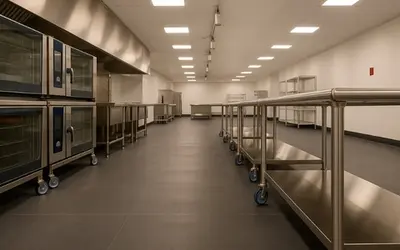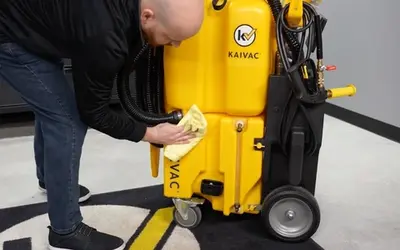Cleaning Public Transportation for Health

Public transportation is just one of the business sectors seeing huge disruptions, thanks to Coronavirus COVID 19. Ridership continues to sink as people voluntarily work from home. Mandatory, shelter-in-place orders will drive that number even lower.
Yet, public transportation, light rail, trains, and buses can’t shut down fully. An essential service, they are the only way some can get to grocery stores, doctor appointments or their own essential job. Even airlines need to keep flying planes so people can get home and goods can make it empty store shelves.
In response, transit agencies and airlines are stepping up their cleaning, sanitizing and maintenance protocols to help protect their riders, employees and the general population. Here’s the best tips when cleaning public transportation for health.
Public Transportation by the Numbers
Public transportation has seen great growth over the years, enjoying a 28% increase in ridership since 1995, according to the American Public Transportation Association. It’s a $71 billion industry, directly employing over 435,000 people. In 2018, Americans took 9.9 billion trips on public transportation.
Those numbers have changed since the Coronavirus COVID-19 outbreak. While there are no national numbers yet, CityLab has collected the following statistics: ‘Ridership across New York City’s MTA, the nation’s largest public transit system, fell by 60% on subways and as much as 90% on commuter trains. Washington, D.C.’s WMATA lost 100,000 riders in the course of week. In San Francisco, rail ridership on BART was down a staggering 90% as of Tuesday, and the SFMTA’s buses and railcars had plummeted 35% by the end of last week. Intercity rail travel has also taken a huge hit: Bookings on Amtrak have plunged 50% since the outbreak. Public ferry boats have emptied out, from Seattle to Staten Island.’
Airlines Feel the Pinch Too
2018 was a banner year for U.S. airlines and foreign airlines serving the U.S. Together they carried an all-time high of 1 billion passengers, according to the Bureau of Transportation Statistics.
Today, many major U.S.-based airlines have suspended, reduced or cut flights with more announced each day. Things have grown so dire that they are asking the federal government for $58 billion bailout.
Cleaning Public Transportation for Health
Now, more than ever, proper cleaning of public transportation interiors and surfaces for health is vital. The Federal Transit Administration has put out the following guidelines for cleaning high touch surfaces:
- High touch surfaces include kiosks, turnstiles, benches, railings, handrails, garbage cans, door handles, payphones, restroom surfaces (faucets, toilets, counters), poles, handrails, seats, benches, grab bars, and exit buttons.
- If surfaces are dirty, they should be cleaned using a detergent or soap and water prior to disinfection.
- Products registered with EPA for use against novel coronavirus SARS-CoV-2 (the cause of COVID-19) are expected?to be effective against COVID-19 based on data for harder to kill viruses. Follow the manufacturer’s instructions for all cleaning and disinfection products (e.g., concentration, application method and contact time, etc.). See this database of products registered with EPA for use against novel coronavirus SARS-CoV-2.
- For soft or porous surfaces such as carpeted floor, rugs, and drapes, remove visible contamination if present and clean with appropriate cleaners indicated for use on these surfaces.
- Staff should wear PPE in accordance with the disinfectant manufacturer’s instructions. After removing PPE, staff should wash their hands with soap and water for at least 20 seconds.
They recommend cleaning and disinfecting at least once a day.
Cleaning and Disinfecting Public Transportation
Even when following manufacturer instruction, using the wrong tools can make cleaning and disinfecting harder. Mops and cleaning towels, for instance, are notorious for accumulating and spreading dirt, germs and bio-pollutants instead of removing them. Some experts even argue that it’s better not to clean than clean using ineffective methods.
There is advanced equipment that cleans and disinfects quickly and efficiently. As transit agencies look for answers, some have turned to state-of-the-art, No-Touch Cleaning systems. This technology combines chemical metering and injection, an indoor pressure washer and wet vacuum into one machine into one integrated system. Highly efficient, this system is up to 60 times more effective in reducing bacterial contamination than mops.
To fight cross contamination, agencies are also investigating solutions like SmartTowels. Numbered with eight quadrants, this technology lets maintenance workers wipe down surfaces confident that they are always using a fresh section of towel.
While Coronavirus COVD-19 continues to dominate the news, and our thoughts, take comfort knowing that cleaning helps prevent it. Explore the full line of Kaivac advanced cleaning machines and disinfectant chemicals perfect for cleaning public transportation stations, trains, planes, and surfaces.
Related Posts

Floor Cleanliness and Food Safety Scores
Poorly maintained floors are unsafe and unsanitary. They hold standing water, harbor pests, and cause slip, trip, and fall accidents. Here’s how to improve floor care and your food safety scores.
Read more
Preventive Maintenance for Your No-Touch Cleaning® System
Your Kaivac No-Touch Cleaning system makes restroom maintenance fast and easy. Keeping your No-Touch Cleaning system in good working order is also fast and easy. Kaivac makes performing preventative maintenance and troubleshooting potential issues simple. No special equipment or technical expertise required.
Read more
Beyond the Restroom: Kaivac for Fast, Easy, and Complete Kitchen Floor Care
You already know and trust Kaivac for restroom care. Our No-Touch Cleaning® systems make the unpleasant task of servicing restrooms fast, easy and complete. But did you know Kaivac has cleaning machines for every kind of floor?
Read more